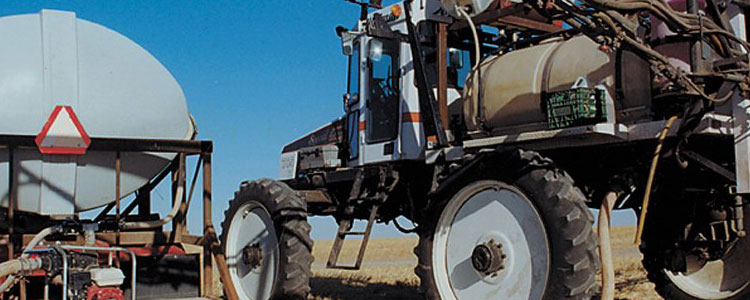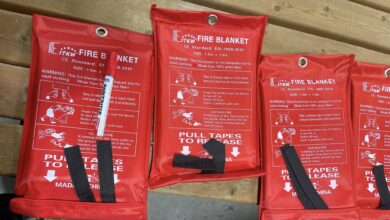
Pre-harvest Herbicide Applications
By Kim Stonehouse, PAg, Crops Extension Specialist, Tisdale and Clark Brenzil, PAg, Provincial Specialist Weed Control, Regina
Applications of pre-harvest herbicides at the right time can aid harvest by reducing the amount of green weed material present in a crop and help control perennial weeds. If these applications are done at an incorrect time it can reduce yield, compromise grain quality and leave unwanted residues in the grain that can threaten market access.
There are two categories of herbicides that can be used as harvest aids. Systemic herbicides, of which glyphosate is the only active ingredient in this category and contact herbicides, otherwise known as desiccants.
In plants, glyphosate moves towards the active growing points. Since the majority of active growth in perennials like Canada thistle, perennial sow-thistle, quackgrass and dandelion is above-ground during spring and summer, herbicide applications made at these times usually result in top growth control only. As the days become shorter in late summer and fall, the perennial plant’s energy shifts to the production of new roots and root buds. Glyphosate application at this time allows more of the herbicide to be translocated into the roots and greatly improves the level of control.
Crops with extreme variations in maturity can make the timing of pre-harvest applications of glyphosate challenging. Product labels indicate that application must only be made when the grain in the majority of the field is below 30 per cent seed moisture content. This includes grain in any harvestable tillers. At this point, the movement of sugars and glyphosate into the grain, stops. For most crops, this is approximately the time the crop would be swathed. If glyphosate is applied too early, the grain will fill poorly, resulting in shrunken seed and glyphosate residues in the grain will be higher than allowable levels. It is recommended that any areas of the field that are obviously delayed compared to the majority of the field should be avoided and left to further mature before returning to finish the field.
Several visual cues indicate when grain is less than 30 per cent seed moisture content. Descriptions of these can be found in the Ministry of Agriculture’s 2020 Guide to Crop Protection.
Before deciding to make a pre-harvest glyphosate application, there are some important points that should be considered:
- Glyphosate is not a desiccant and does not increase the rate of crop dry-down versus nature when applied at the proper staging;
- not all glyphosate products are registered for all crops. Consult the label before applying;
- many buyers of crops such as malt barley, milling oat or durum destined for Italy, may not purchase crops treated with pre-harvest glyphosate. Check with intended buyers before application and;
- grain from crops treated with pre-harvest glyphosate should not be used for seed.
Contact herbicides such as those that fall into Groups 10, 14 and 22 are true desiccants. These products work by disrupting the cell membranes of the plant causing the internal liquids to be released and evaporate, resulting in accelerated drying. Because of the contact nature of these products and the speed at which they work, translocation of the herbicides within the plant and to the seed is minimal to non-existent. Most often residues of contact herbicides in the marketed grain are the result of abrasion of treated parts of the plant against seed surfaces inside the combine.
A challenge to using contact herbicides effectively is that performance is dependent on how well the plant is covered. For this reason, recommendations for application water volumes can range from 100 to 550 L/ha (40 to 220 litres per acre or 10 to 60 U.S. gallons per acre). Another drawback to contact herbicides is they provide little control of perennial weeds.
There are also several tank mix options combining glyphosate and contact herbicides prior to harvest, however, these may come with some compromises. Contact herbicides require higher water volumes for adequate coverage, yet higher water volumes can increase the risk of hard water antagonism of glyphosate. This can be addressed by using ammonium sulphate to treat the spray water prior to adding herbicides to the spray tank. Check with contact herbicide manufacturers for compatibility with ammonium sulphate before using.
Combining contact herbicides with glyphosate also has the potential to compromise glyphosate uptake and translocation to target perennial weeds. Glyphosate can take from 24 to 48 hours to be absorbed from the leaf and then translocate to active growing points. The uptake and translocation of glyphosate in the plant happens fastest right after application and the rate of movement to growing points progressively decreases until it is near zero at 24 hours. In the same way that translocation of the contact herbicides themselves are “self-limiting” because of rapid cell rupture, glyphosate applied with them can suffer the same fate and lose some effectiveness on perennial weeds.
Finally, for all products and registered crops there is a recommended pre-harvest interval (PHI) that is linked more to efficacy of the product than grain residues. The PHIs can range by product and crop, from two to 14 days for optimum weed control and maximum harvest management benefit. Grain residues are more closely linked to crop stage at application than anything else, with premature staging resulting in higher residues in the grain. Producers who have any questions about herbicide application can contact their local crops extension specialist or the Agriculture Knowledge Centre at 1-866-457-2377.
For the latest information and for more updates on everything Kindersley ‘Like’ the Kindersley Social Facebook page below…








































